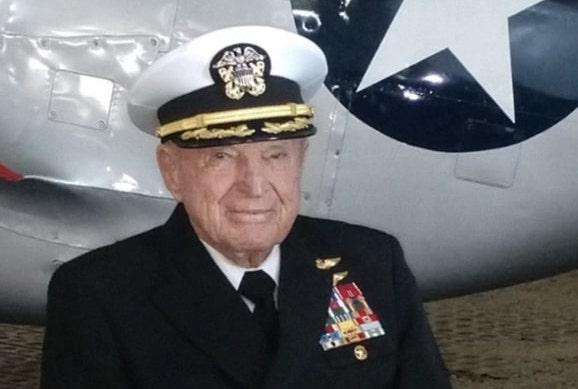Out-gunned and out-manned, one Navy air pilot was awarded the Navy Cross—its second highest military honor—at a ceremony on Jan. 20, roughly 70 years after he single-handedly shot down four Soviet fighter jets that ambushed him in a battle that he has been forbidden to discuss, per White House orders, for more than 50 years.
Receiving the honor was 97-year-old Royce Williams, of Escondido, California, and the 35-minute air battle is one of the longest recorded in naval air history, according to declassified government records.




